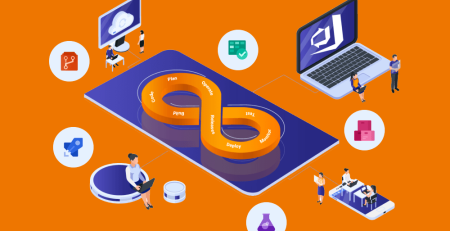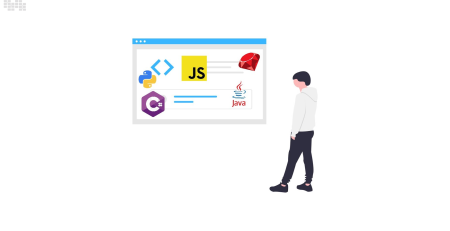How To Write Software Requirements Specification (SRS) Document For Your Project?
The Software Requirements Specification (SRS) document is the cornerstone of project success in the field of software development. It serves as the project’s compass as it progresses from the conceptual stage to a fully developed, usable software product. We will set out on a quest to demystify the art of crafting a skillfully constructed SRS document for your project in this extensive tutorial. Regardless of your level of experience in the field of software engineering, mastering the nuances of SRS authoring is essential to the successful completion of your project.
Understand Your Project Scope
Understanding your project scope is a fundamental step in the software development process, and it sets the stage for creating a successful Software Requirements Specification (SRS) document. Project scope refers to the boundaries and objectives that define what your software project will achieve. Here’s how to effectively understand your project scope:
1. Define the Project Objectives:
Begin by identifying the primary goals and objectives of your software project. What problem does it aim to solve, and what benefits will it provide? These objectives should align with the needs and expectations of your project stakeholders, including clients, end-users, and other team members.
2. Identify Stakeholders:
Make a list of every person or organization with a stake in the project’s success. The end users, developers, testers, project managers, and any other pertinent stakeholders are also included in this, in addition to the project sponsors and clients. Every stakeholder could have different viewpoints and demands that should be taken into account.
3. Conduct Stakeholder Interviews and Meetings:
Engage in discussions and meetings with your project stakeholders to gather their input. Conduct interviews and workshops to gain insights into their expectations, preferences, and constraints. Be sure to ask open-ended questions to encourage detailed feedback.
4. Document Requirements and Constraints:
As you engage with stakeholders, document their requirements, constraints, and preferences. Requirements can be classified into two categories:
- Functional Requirements: These specify what the software should do, such as features, interactions, and user interfaces.
- Non-functional Requirements: These outline how the software should perform, covering aspects like performance, security, scalability, and compliance.
Constraints may include budget limitations, time constraints, regulatory requirements, and existing technology or infrastructure limitations.
5. Clarify Assumptions:
In the early stages of the project, it’s common to have some assumptions about certain aspects. Document these assumptions and recognize that they may need further validation as the project progresses.
6. Establish Scope Boundaries:
Determine the scope boundaries by defining what is within the project’s scope and what is not. This helps prevent scope creep, which occurs when additional features or requirements are added without proper evaluation.
7. Create a Project Scope Statement:
Summarize your findings and decisions in a Project Scope Statement. This document should be concise and clearly outline the project’s objectives, deliverables, assumptions, constraints, and acceptance criteria.
8. Review and Validate:
Share the Project Scope Statement with your stakeholders for their review and validation. This step ensures that everyone is on the same page and can identify any discrepancies or misunderstandings early in the project.
9. Maintain Scope Control:
Controlling the project scope is essential throughout the whole lifespan of the project. Evaluate the effect that modifications and additional requirements will have on the project’s goals, schedule, and budget. To evaluate and approve any modifications to the scope, use a formal change management procedure.
The key to producing an effective SRS document is comprehending the scope of your project. It aids in defining what must be accomplished, who the major players are, and the parameters the project will function within. The project’s goals and needs are precisely reflected in your SRS thanks to this clarity, which creates the foundation for a successful software development journey.
Define the Document Structure
It is essential to define the document format for your Software Requirements Specification (SRS) in order to provide a detailed, well-organized blueprint for your software project. All project stakeholders may readily access and comprehend the information in the SRS thanks to a well defined structure. A typical SRS document structure is shown below:
- Introduction:
- Purpose: Explain the purpose of the document, providing an overview of what the SRS contains and its significance in the project.
- Scope: Define the scope of the software project, including what the software will and will not do.
- Audience: Identify the intended readers and users of the SRS, such as developers, testers, project managers, and stakeholders.
- Overall Description:
- Product Perspective: Describe the software’s context within a larger system or environment. Include information on existing systems or interfaces that the software will interact with.
- Product Features: Provide an overview of the major features and functionalities of the software. This section sets the stage for more detailed requirements later in the document.
- User Classes and Characteristics: Define the different user groups and their characteristics, including their roles and responsibilities.
- Operating Environment: Specify the hardware, software, and network environments in which the software will operate.
- Design and Implementation Constraints: Describe any constraints that may impact the design or implementation of the software, such as technology choices, regulatory requirements, or third-party dependencies.
- Specific Requirements:
- Functional Requirements: Detail the specific functionalities and features the software must provide. Use clear, concise language and include use cases or user stories when applicable.
- Non-functional Requirements: Outline non-functional aspects, such as performance, security, scalability, reliability, and usability. These requirements define how the software should perform and behave under various conditions.
- External Interface Requirements: Describe how the software will interact with external systems, including data exchange formats, communication protocols, and integration points.
- User Interface Requirements: Specify the design and layout of the user interface, including wireframes, mockups, and user experience guidelines.
- Quality Assurance and Testing Requirements: Define the testing criteria, test cases, and acceptance criteria that will be used to ensure the software meets its requirements.
- Use Cases:
- Include detailed use case scenarios that illustrate how users will interact with the software. Use diagrams, flowcharts, or narrative descriptions to provide a clear understanding of user interactions and system responses.
- System Architecture:
- Describe the overall architecture of the software, including components, modules, and their interactions. Use architectural diagrams or block diagrams to visualize the system’s structure.
- Data Models:
- Define the data structures, database schema, and relationships between data entities. Use Entity-Relationship Diagrams (ERDs) or data flow diagrams if necessary.
- External Interfaces:
- Provide detailed information about external interfaces, including APIs, web services, or hardware interfaces. Specify data formats, protocols, and communication methods.
- Quality Attributes:
- Detail the quality attributes or non-functional requirements, such as performance, security, and scalability. Define measurable criteria for each attribute.
- Appendices:
- Include supplementary information that supports the main content of the SRS, such as glossaries, references, or additional diagrams.
- Review and Approval:
- Conclude the SRS document with a section for signatures or approvals from relevant stakeholders, indicating their agreement with the document’s contents.
By following this structured approach, you can create an SRS document that is organized, easy to navigate, and comprehensive, ensuring that all essential project requirements and details are clearly documented for successful software development.
Write Clear and Concise Requirements
Writing clear and concise requirements is essential for effective communication among project stakeholders and for ensuring that your Software Requirements Specification (SRS) document serves as a reliable guide for software development. Unclear or ambiguous requirements can lead to misunderstandings, delays, and costly revisions. Here are some tips on how to write clear and concise requirements:
- Use Simple and Precise Language:
- Express requirements in clear and straightforward language. Avoid jargon, technical terms, or overly complex sentences that can confuse readers.
- Be Specific:
- Clearly state what the software should do or achieve. Avoid vague or ambiguous phrases that leave room for interpretation. Use concrete examples and measurable criteria where applicable.
- Use a Consistent Format:
- Adopt a standardized format for expressing requirements. A common format is “The system shall [requirement]” for functional requirements. Consistency in wording makes it easier for readers to understand and reference requirements.
- Break Down Complex Requirements:
- If a requirement is complex, consider breaking it down into smaller, more manageable sub-requirements. This helps prevent confusion and allows for better traceability.
- Avoid Multiple Requirements in One Statement:
- Each requirement should address a single feature or function. Avoid combining multiple requirements in a single statement, as this can lead to ambiguity.
- Use Active Voice:
- Write requirements in the active voice, which is more direct and easier to understand. For example, “The system must generate a report” is clearer than “A report must be generated by the system.”
- Include Acceptance Criteria:
- Specify acceptance criteria for each requirement. These criteria define the conditions that must be met for the requirement to be considered satisfied. Clear acceptance criteria leave no room for interpretation.
- Avoid Negative Statements:
- Avoid negations such as “not,” “should not,” or “cannot” in requirements whenever possible. Negative statements can introduce confusion. Instead, express requirements in positive terms.
- Use Visual Aids:
- When appropriate, use diagrams, flowcharts, tables, or mockups to illustrate requirements visually. Visual aids can complement textual descriptions and enhance understanding.
- Review and Revise:
- Conduct thorough reviews of your requirements with stakeholders, including developers and testers. Incorporate their feedback to improve clarity and remove any ambiguities.
- Keep It Concise:
- Avoid unnecessary elaboration or excessive detail in your requirements. Focus on conveying the essential information. Conciseness makes the document more readable.
- Prioritize Requirements:
- Clearly indicate the priority of each requirement, such as “Must-Have,” “Should-Have,” or “Nice-to-Have.” This helps stakeholders understand which requirements are most critical.
- Use Templates and Tools:
- Consider using requirement management tools and templates designed for writing and organizing requirements. These tools often provide guidance and best practices for clear and concise requirement writing.
- Test the Requirements:
- Ensure that each requirement is testable. If you cannot devise a test to verify a requirement, it may be too vague or complex and should be revised.
- Seek Clarification When Needed:
- If you are unsure about any aspect of a requirement, don’t hesitate to seek clarification from subject matter experts or stakeholders. It’s better to address questions upfront than to make assumptions.
Remember that clear and concise requirements are a cornerstone of successful software development. They serve as a common understanding among stakeholders, guide development efforts, and facilitate effective testing and validation. Investing time and effort into writing and maintaining clear requirements pays off in the form of reduced errors, better project management, and improved project outcomes.
Prioritize Requirements
Prioritizing requirements is a crucial step in the software development process, as it helps ensure that the most important features and functionalities are addressed first, allowing for better resource allocation and timely project delivery. Here’s a guide on how to prioritize requirements effectively:
- Identify Stakeholder Priorities:
- Begin by engaging with project stakeholders, including clients, end-users, and project team members. Gather their input on which requirements are most critical to the project’s success.
- Categorize Requirements:
- Group requirements into categories based on their nature. Common categories include:
- Must-Have (High Priority): Requirements that are essential for the software’s core functionality or meeting key project objectives. These are non-negotiable.
- Should-Have (Medium Priority): Important requirements that enhance the software’s functionality or user experience but are not critical for the initial release.
- Nice-to-Have (Low Priority): Desirable features or enhancements that would be valuable but are not essential for the project’s success.
- Use MoSCoW Prioritization:
- The MoSCoW method (Must-Have, Should-Have, Could-Have, Won’t-Have) is a widely-used technique for prioritizing requirements. Assign each requirement to one of these categories to clearly define its priority level.
- Apply the 80/20 Rule (Pareto Principle):
- Recognize that in many projects, a small percentage of requirements often deliver the majority of the value. Focus on identifying and prioritizing the critical few requirements that will have the most significant impact on project success.
- Consider Business Value:
- Assess the business value associated with each requirement. Prioritize requirements that align with the project’s strategic goals, customer needs, or revenue generation potential.
- Evaluate Dependencies:
- Analyze whether certain requirements are dependent on others. Prioritize requirements that need to be implemented first to enable the development of other features.
- Assess Risks:
- Identify requirements that mitigate risks or address potential issues early in the project. These requirements may take precedence to ensure project stability.
- Engage in Iterative Planning:
- Prioritization is not a one-time activity; it should be revisited regularly, especially in agile development methodologies. As the project progresses and new information becomes available, adjust priorities accordingly.
- Document and Communicate Priorities:
- Clearly document the prioritization decisions and communicate them to the project team and stakeholders. Ensure that everyone understands which requirements are top priorities.
- Track Changes and Adjustments:
- Maintain a record of changes to requirement priorities over time. Changes may occur due to shifting project goals, evolving user needs, or changes in market conditions.
- Revisit Priorities During Reviews:
- During project reviews, such as sprint planning or project retrospectives, revisit the priorities and make adjustments as needed based on the latest information.
- Review with Stakeholders:
- Periodically review requirement priorities with stakeholders to ensure alignment with their evolving needs and expectations.
Prioritizing requirements is an ongoing process that requires collaboration, flexibility, and a deep understanding of project goals and constraints. By focusing on the most critical requirements, you can ensure that your software project delivers value early and efficiently manages resources throughout its development lifecycle.
Include Use Cases and Diagrams
A good technique to show how the program will operate in actual situations is to include use cases and diagrams in your program Requirements Specification (SRS) document. The comprehension of system activity, interactions, and user experiences is improved by these visual aids. Adding use cases and diagrams to your SRS is done as follows:
1. Define Use Cases:
- Determine your software’s primary use cases to start. A use case depicts a particular exchange between a user (or system actor) and the computer program. Every use case often concentrates on a particular job or objective that a user wishes to complete.
2. Create a Use Case Diagram:
- Use a use case diagram to provide an overview of the system’s interactions with external actors (users, other systems, or devices) and the primary use cases. Use case diagrams use actors (represented as stick figures) and use case ellipses to illustrate these interactions.
3. Detail Use Case Descriptions:
- For each use case in the diagram, provide a detailed description in the SRS. Include the following information:
- Use Case Name: A clear and concise name that describes the action or task.
- Description: An overview of what the use case accomplishes.
- Actors: List the actors involved, which can include users, system components, or external systems.
- Preconditions: Conditions that must be met before the use case can be initiated.
- Main Flow: Step-by-step description of the main actions or steps within the use case.
- Alternate Flows: Describe any alternate paths or exceptions that may occur.
- Postconditions: Define the conditions that indicate the successful completion of the use case.
4. Use Sequence Diagrams:
- Sequence diagrams are excellent for illustrating the interaction and order of messages exchanged between objects or actors during a specific use case. Use sequence diagrams to visualize the dynamic behavior of your system in response to user actions.
5. Employ Activity Diagrams:
- Activity diagrams can help visualize the workflow or process flow within a use case. They show how actions and decisions are connected and can provide insight into the logical flow of the software.
6. Use State Diagrams (if applicable):
- If your software involves complex state transitions, such as for a workflow or finite state machine, state diagrams can be used to represent the different states and transitions between them.
7. Include Screen Mockups or Wireframes:
- If possible, incorporate screen mockups or wireframes to visually represent the user interface (UI) elements and layouts associated with each use case. This helps stakeholders visualize the user experience.
8. Label Diagrams Clearly:
- Label diagrams, objects, and arrows clearly with descriptive names and annotations to ensure that readers can easily understand the visual representations.
9. Cross-Reference with Requirements:
- Ensure that use cases and diagrams are cross-referenced with the corresponding functional requirements in your SRS. This helps maintain traceability and ensures that each requirement is addressed by a use case.
10. Review and Validate:
- Review the use cases and diagrams with stakeholders, including users and developers, to verify their accuracy and alignment with the project’s goals and requirements.
11. Keep Visuals Updated:
- As the project progresses, make sure to update the use cases and diagrams to reflect any changes in requirements, functionality, or user interactions.
Including use cases and diagrams in your SRS document enhances its comprehensibility and provides a valuable visual representation of your software’s behavior. These visual aids serve as a bridge between textual requirements and real-world scenarios, making it easier for stakeholders to understand and validate the software’s functionality and user experience.
Review and Validate
The software development process must include reviewing and evaluating your Software Requirements Specification (SRS) document. To make sure the document correctly reflects the project’s needs, aligns with stakeholders’ expectations, and lays the groundwork for successful development, a methodical methodology is used. An instruction manual for reviewing and validating your SRS is provided below:
1. Assemble a Review Team:
- Gather a diverse group of stakeholders, including project managers, clients, developers, testers, subject matter experts, and other relevant parties. Each person brings a unique perspective to the review process.
2. Share the Document:
- Distribute the SRS document to the review team well in advance of the review meeting or session. Provide ample time for reviewers to read and analyze the document thoroughly.
3. Define Review Objectives:
- Clearly define the purpose and objectives of the review. Establish what you want to achieve, such as identifying errors, ambiguities, inconsistencies, and ensuring alignment with project goals.
4. Conduct a Structured Review:
- Choose a structured review method that suits your project, such as a Requirements Inspection, a Requirements Walkthrough, or a Peer Review. These methods provide guidelines for conducting effective reviews.
5. Use a Checklist:
- Provide reviewers with a checklist of common issues to look for, such as unclear requirements, missing information, contradictions, or deviations from standards and regulations.
6. Encourage Open Communication:
- During the review meeting or session, encourage open communication and constructive feedback. Create an environment where team members feel comfortable asking questions and sharing their insights.
7. Document Feedback:
- Record all feedback, comments, and suggestions provided by the review team. Document identified issues or discrepancies within the SRS document for future reference.
8. Prioritize Issues:
- Collaboratively prioritize the identified issues based on their severity and impact on the project. Focus on addressing critical issues first.
9. Resolve Issues and Revise:
- Work with the team to resolve the identified issues and make necessary revisions to the SRS document. Ensure that changes are tracked and well-documented.
10. Validate with Stakeholders:
- After addressing internal review feedback, validate the SRS document with key stakeholders, including clients and end-users. Ensure that their expectations align with the documented requirements.
11. Verify Traceability:
- Confirm that there is clear traceability between requirements, use cases, diagrams, and other sections of the SRS. Ensure that each requirement is adequately covered.
12. Compliance Check:
- If your project needs to adhere to specific industry standards or regulatory requirements, verify that the SRS document complies with these standards.
13. Document Review Outcomes:
- Maintain a record of the review outcomes, including the issues identified, their resolutions, and any changes made to the SRS document.
14. Final Review and Sign-Off:
- Conduct a final review with stakeholders and project sponsors to ensure their approval and sign-off on the SRS document. This formalizes their agreement with the requirements.
15. Version Control:
- Implement version control for the SRS document to track revisions and maintain a clear history of changes.
16. Document Update Process:
- Establish a process for updating the SRS document as the project progresses and evolves. Ensure that the document remains accurate and aligned with project goals.
Reviewing and validating the SRS document is an iterative process that may involve multiple rounds of feedback and revisions. It’s a critical step to ensure that the requirements are well-defined, understood, and accepted by all stakeholders, setting the stage for a successful software development project.
Maintain Version Control
Maintaining version control is a crucial aspect of managing your Software Requirements Specification (SRS) document, as well as any other project documentation. Version control helps you keep track of changes, collaborate effectively with team members, and ensure the integrity of your document throughout the software development lifecycle. Here are some key considerations for maintaining version control:
- Choose a Version Control System (VCS): Select a version control system that suits your needs. Popular VCS options include Git, Subversion (SVN), and Mercurial. Git is widely used for its flexibility and distributed nature.
- Repository Setup: Create a central repository where the SRS document and related project files will be stored. Ensure that team members have access to this repository.
- Branching Strategy: Define a branching strategy that suits your project’s needs. Common strategies include feature branches, release branches, and the main/master branch. Use branches to isolate changes and work on specific features or updates without affecting the main document.
- Commit Regularly: Encourage team members to commit their changes regularly to the version control system. Each commit should have a meaningful message that describes the purpose of the change.
- Pull Requests or Merge Requests: If you’re using Git, consider implementing a process where changes are reviewed through pull requests (GitHub) or merge requests (GitLab). This allows for peer review before changes are merged into the main document.
- Version Tagging: Use version tags or labels to mark significant milestones or releases of the SRS document. This makes it easy to track changes over time and revert to specific versions if needed.
- Documentation: Maintain clear documentation within the repository or in a separate document that outlines the version control workflow and guidelines for team members.
- Conflict Resolution: Be prepared to handle conflicts that may arise when multiple team members make changes to the document simultaneously. VCS tools provide mechanisms to resolve conflicts gracefully.
- Backup and Disaster Recovery: Implement backup and disaster recovery measures to safeguard your repository. Regularly back up your version control server to prevent data loss.
- Access Control: Manage access permissions to the repository carefully. Ensure that only authorized team members have write access, while others may have read-only access.
- Continuous Integration (CI): Consider integrating your version control system with a CI/CD (Continuous Integration/Continuous Deployment) pipeline. Automated checks can help maintain document quality and consistency.
- Change Log: Maintain a change log or release notes that document the changes made to each version of the SRS document. This provides transparency about document revisions.
- Training and Onboarding: Ensure that team members are trained in version control best practices and understand the workflow. New team members should be onboarded to the version control system.
- Regular Review: Periodically review the repository’s organization, branch structure, and access controls to ensure they align with the project’s evolving needs.
Maintaining version control not only ensures the integrity and consistency of your SRS document but also facilitates collaboration, accountability, and the ability to track changes over time. It is a fundamental practice in modern software development that helps teams manage complexity and deliver high-quality software projects.
Seek Legal and Regulatory Compliance
Seeking legal and regulatory compliance is a crucial aspect of software development, especially when dealing with sensitive data or when operating in industries subject to specific laws and regulations. Failing to comply with legal requirements can lead to legal disputes, fines, and damage to your organization’s reputation. Here are steps to help you ensure legal and regulatory compliance in your software development project:
- Identify Applicable Laws and Regulations:
- Begin by identifying the relevant legal and regulatory frameworks that apply to your software project. This may include data protection laws (e.g., GDPR), industry-specific regulations (e.g., HIPAA for healthcare), or intellectual property laws.
- Consult Legal Experts:
- Engage legal experts or consultants who specialize in the specific areas of law relevant to your project. They can provide guidance on compliance requirements and help you interpret complex legal language.
- Conduct a Privacy Impact Assessment (PIA):
- If your software processes personal data, conduct a PIA to assess the potential privacy risks and identify measures to mitigate those risks. Compliance with data protection laws, such as GDPR, often requires PIAs.
- Integrate Privacy by Design:
- Implement the principles of privacy by design and security by design into your software development process. This means considering data protection and security measures from the initial design phase.
- Implement Security Measures:
- Ensure that your software incorporates security measures to protect against data breaches and cyberattacks. This includes encryption, access controls, and regular security testing.
- Document Compliance Requirements:
- Clearly document the legal and regulatory compliance requirements within your Software Requirements Specification (SRS) document. These requirements should be explicitly stated to guide development and testing efforts.
- Obtain Necessary Permissions:
- If your software involves collecting or processing data, obtain the necessary permissions or consents from users as required by data protection laws. Implement mechanisms for users to provide informed consent.
- Implement Data Retention Policies:
- Define data retention and deletion policies to ensure that data is not kept longer than necessary. This is particularly important in compliance with data protection laws.
- Regular Audits and Compliance Checks:
- Conduct regular audits and compliance checks to ensure that your software continues to meet legal and regulatory requirements as they evolve over time.
- Employee Training and Awareness:
- Train your development and operational teams on the legal and regulatory requirements relevant to your software. Ensure that they understand their responsibilities in maintaining compliance.
- Legal Review of Contracts and Agreements:
- If your software project involves contracts or agreements with third parties (e.g., vendors, clients), have these reviewed by legal counsel to ensure they align with compliance requirements.
- Stay Informed About Changes:
- Stay updated on changes to relevant laws and regulations. Legal requirements can change, so it’s crucial to adapt your software and practices accordingly.
- Incident Response Plan:
- Develop an incident response plan in case of data breaches or legal violations. This plan should outline the steps to take to minimize damage and comply with reporting requirements.
- Seek Certification (if applicable):
- In some cases, seeking certification or compliance with specific standards (e.g., ISO 27001 for information security) can demonstrate your commitment to legal and regulatory compliance.
- Documentation and Record-Keeping:
- Maintain records of your compliance efforts, including audits, assessments, and documentation of consent. Proper record-keeping can be valuable in demonstrating compliance to authorities if necessary.
- Legal Counsel Engagement:
- In complex or high-stakes projects, consider ongoing legal counsel engagement to ensure continuous compliance.
Compliance with legal and regulatory requirements should be an integral part of your software development process. By proactively addressing these considerations, you can mitigate legal risks and build trust with users and stakeholders.
Document Assumptions and Constraints
One of the most important steps in the Software Requirements Specification (SRS) procedure is the documentation of assumptions and restrictions. Throughout the course of the software development project, assumptions and limitations aid in setting expectations, providing context, and guiding decision-making. Following are some tips for properly capturing assumptions and constraints:
1. Distinguish Between Assumptions and Constraints:
- Understand the difference between assumptions and constraints:
- Assumptions: These are factors or conditions that are considered to be true, but their actual validity is uncertain or unknown. Assumptions are often made due to incomplete information or uncertainties in the project.
- Constraints: Constraints are limitations or restrictions that must be adhered to during the project. They are non-negotiable and can include budget constraints, resource limitations, regulatory requirements, and more.
2. Create a Clear List:
- Create a dedicated section in your SRS document for assumptions and constraints. Use bullet points or numbered lists to clearly enumerate each item.
3. Be Specific:
- Clearly state each assumption or constraint in specific terms. Avoid vague or ambiguous language.
4. Provide Rationale:
- For each assumption or constraint, provide a brief explanation of why it is relevant to the project. This helps stakeholders understand the reasoning behind these factors.
5. Include Dependencies:
- If an assumption or constraint is dependent on another factor or condition, clearly articulate this dependency. Understanding dependencies is crucial for effective project planning.
6. Assign Responsibility:
- Assign responsibility for managing and monitoring each assumption and constraint. This ensures that someone is accountable for addressing or mitigating these factors as the project progresses.
7. Review and Validate:
- As part of the review and validation process, ensure that assumptions and constraints are reviewed with stakeholders. Seek their input and validation to ensure that they are accurate and up-to-date.
8. Update as Needed:
- Assumptions and constraints may change over the course of a project. Regularly revisit and update this section of the SRS document to reflect any changes or new insights.
9. Cross-Reference with Requirements:
- Ensure that there is a clear connection between assumptions, constraints, and the project’s requirements. Identify how these factors may impact the fulfillment of requirements.
10. Mitigation Plans:
- For constraints that may pose challenges, consider including mitigation or contingency plans. Outline how your team intends to address these limitations to minimize their impact on the project.
11. Legal and Compliance Considerations:
- If assumptions or constraints are related to legal or regulatory compliance, ensure that they are well-documented and aligned with the legal and regulatory compliance section of your SRS.
12. Communicate Changes:
- If assumptions or constraints change during the project, promptly communicate these changes to relevant stakeholders. Transparency is essential in managing project expectations.
By documenting assumptions and constraints, you provide transparency to your project stakeholders and help manage expectations regarding potential risks and limitations. This documentation serves as a valuable reference throughout the project’s lifecycle, assisting in decision-making and risk management.
Sign-Off and Approval
Sign-off and approval are critical steps in the software development process, marking the formal acceptance and acknowledgment of project deliverables by key stakeholders. These processes ensure that everyone is aligned on project goals, requirements, and expectations. Here’s how to effectively manage sign-off and approval in your software development project:
1. Define Sign-Off Criteria:
- Before seeking sign-off, clearly define the criteria that must be met for the project or specific deliverables to be considered complete and acceptable. This may include meeting all specified requirements, passing quality assurance tests, and addressing any outstanding issues.
2. Identify Key Stakeholders:
- Determine who the key stakeholders are for the project and who holds the authority to provide sign-off and approval. This typically includes project sponsors, clients, and subject matter experts.
3. Conduct a Formal Review:
- Organize a formal review meeting or session where stakeholders can thoroughly examine the project or deliverables. This meeting should provide an opportunity for stakeholders to ask questions, seek clarifications, and review documentation.
4. Document the Review Process:
- During the review, document any feedback, comments, or concerns raised by stakeholders. Ensure that any identified issues or discrepancies are captured for further action.
5. Address Feedback:
- Collaborate with the project team to address the feedback and issues raised during the review. Make necessary revisions or improvements to align with stakeholder expectations.
6. Prepare Approval Documents:
- Create formal approval documents or forms that clearly outline what is being approved, including project milestones, deliverables, or specific features. These documents may include signatures or digital approvals.
7. Schedule a Sign-Off Meeting:
- Schedule a meeting for the formal sign-off and approval process. Present the project or deliverables to stakeholders, highlighting how feedback has been addressed and confirming that the criteria have been met.
8. Seek Sign-Off:
- During the sign-off meeting, request that stakeholders formally sign off on the project or specific deliverables. This signifies their acceptance and approval.
9. Document Approvals:
- Maintain records of all approvals and sign-offs. Ensure that the approval documents are stored securely for future reference, audits, or compliance purposes.
10. Include Legal and Compliance Considerations:
- If your project involves legal or regulatory compliance, ensure that the sign-off and approval process includes compliance checks and validation.
11. Communicate Project Milestones:
- Keep stakeholders informed about project milestones and the progress of sign-off and approval processes. Transparency in communication builds trust and understanding.
12. Escalation Process:
- Establish an escalation process in case approval is delayed or if stakeholders have unresolved concerns. Define the steps to follow in such situations to keep the project on track.
13. Formalize Acceptance:
- Once sign-off and approval are granted, formally communicate the project’s acceptance to the project team. This marks the transition from development to the next phase, whether it’s deployment, testing, or implementation.
14. Continuously Monitor:
- Continue to monitor the project and its deliverables even after sign-off and approval. Be prepared to address any post-approval issues that may arise.
Effective sign-off and approval processes are essential for project success, as they ensure that project goals are met and that stakeholders are satisfied with the outcomes. Clear documentation, open communication, and a systematic approach to these processes are key to achieving successful project sign-off and approval.
Conclusion
In conclusion, a crucial stage in every software development project is the process of developing a Software Requirements Specification (SRS) document. The project’s whole structure is laid out in this document, which gives all parties engaged clarity, alignment, and direction. You can make sure that your SRS document properly conveys the project’s goals and needs by comprehending the project scope, creating a structured document, prioritizing requirements, writing clear and concise specifications, and using visual aids like use cases and diagrams.
Additionally, the SRS document’s inspection and validation are crucial for preserving accuracy and minimizing misconceptions. Utilizing organized review procedures and interacting with a wide range of stakeholders enables issues to be found early in the project lifecycle, reducing the need for expensive modifications and increasing project effectiveness. The SRS document is also kept current and flexible as the project develops by maintaining version control and a specified change management methodology.
In the end, the SRS document serves as a living contract that not only directs development activities but also encourages teamwork and communication between team members, clients, and end users. By lowering risks, enhancing transparency, and guaranteeing that the delivered software complies with the project’s objectives and expectations, a well-written SRS document may greatly contribute to the success of a software development project.













Leave a Reply